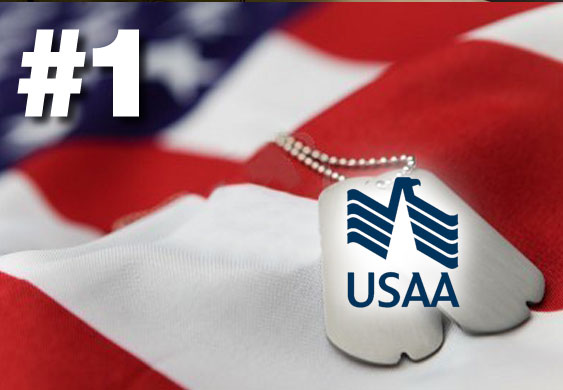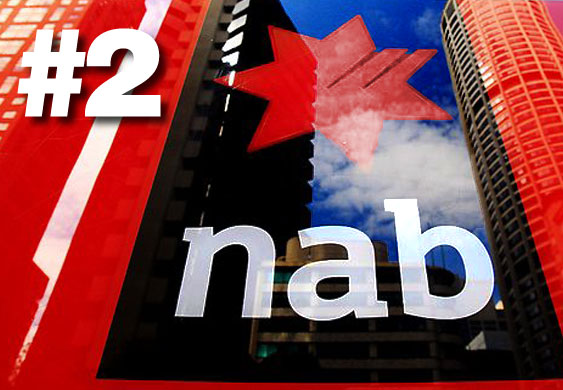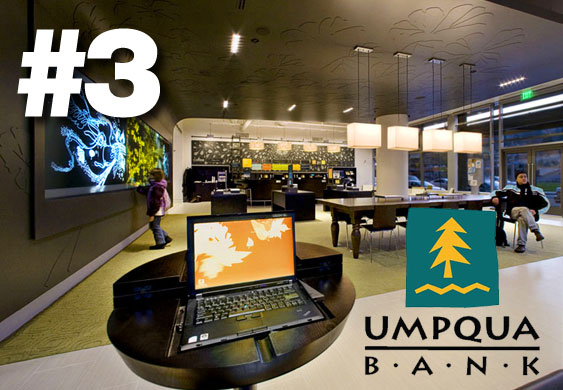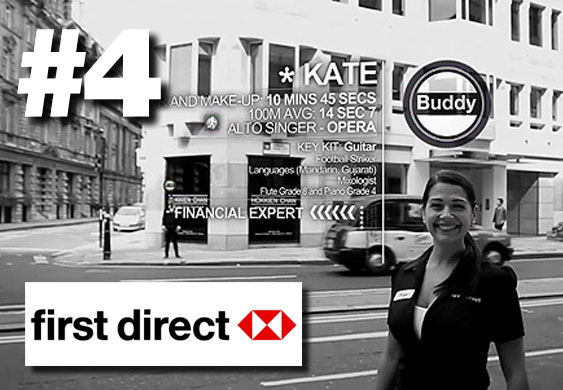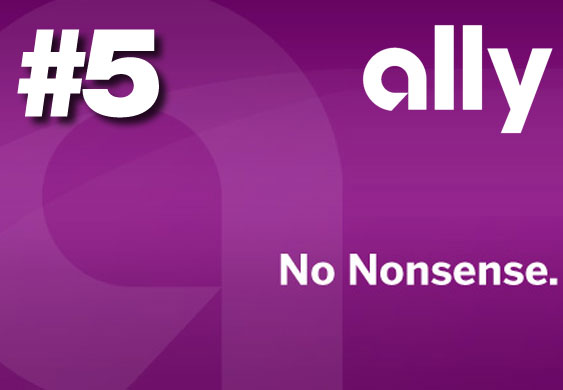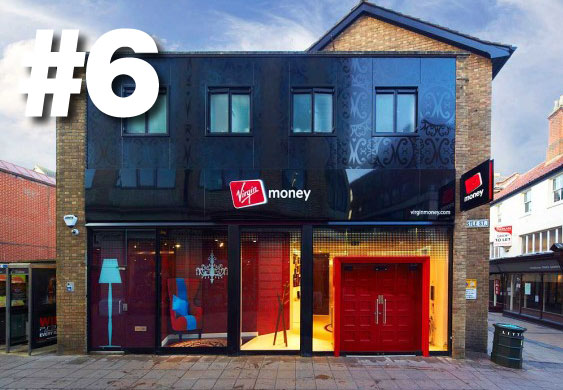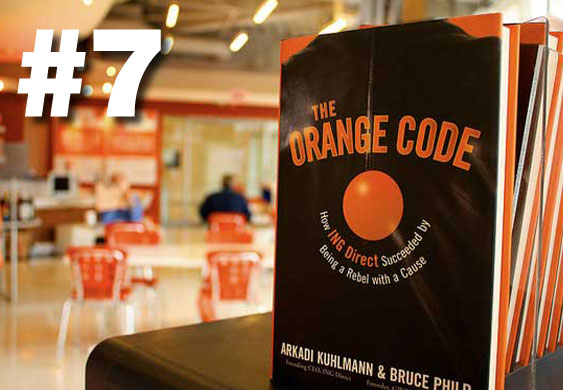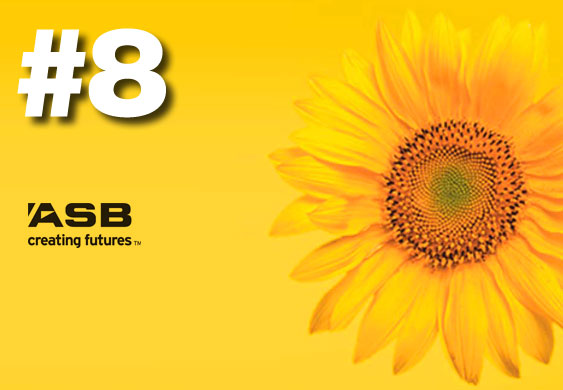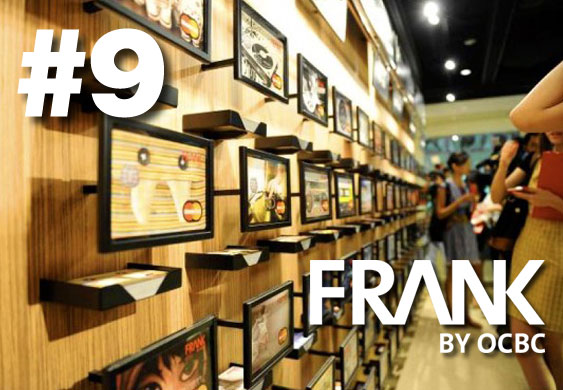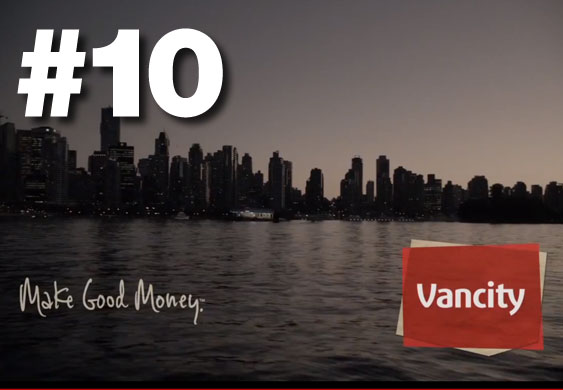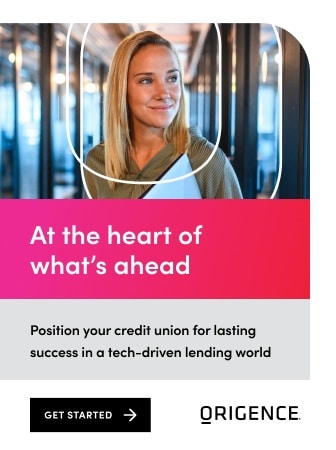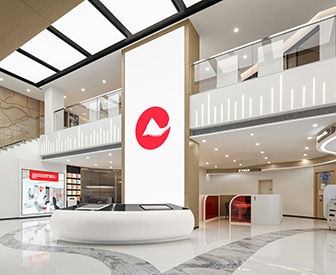This isn’t a list of “The 10 Best Banks.” There are at least a half dozen different research organizations with models ranking financial institutions. Most of these rank banks according to their estimated brand valuation using proprietary (and arbitrary) formulas largely tied to asset growth. This is not one of those lists.
These are 10 of the greatest bank brands you can learn from. They embody marketing ingenuity and illustrate multiple branding principles. Not everything they try works as hoped, but even their failures offer lessons better learned through the experience of others rather than your own.
If all the articles about USAA are right — and there are many — these guys can do nothing wrong. Satisfaction study after satisfaction study consistently put USAA light years ahead of every other bank out there, even credit unions.
USAA has managed to become one of the biggest banks in the U.S., with around $50 billion in deposits and more than 6.3 million accounts. They accomplished this with only one physical branch location for many years. One of the keys to their success is their focus on a narrow and specific audience segment, namely those in military service and their families.
They have been on the forefront of alternate, online and mobile channels since the very beginning. They are one of the few retail financial institutions allowing people to rate and review products online.
Responding to news of BofA’s $5 debit card fee, USAA posted a press release on their website about their “fee-losophy.” The article got over 780 comments. Most banks don’t have 7-8 comments on their entire blog or website.
They have around 28,000 followers on Twitter, putting them in the top four or five in the English-speaking world. They have 232,440 ‘Likes’ on Facebook. Pound for pound, USAA trumps all other financial institutions in social channels. For the size of its assets and audience, they have a tremendous ratio of fans.
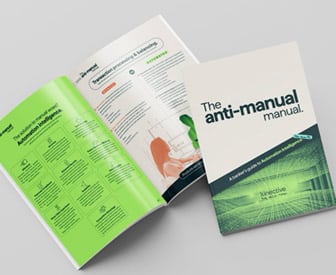
The New AI: A Banker’s Guide to Automation Intelligence
Manual tasks across channels is costly. And while AI is hot, there’s a simpler way to bring efficiency that many bankers have overlooked.
Read More about The New AI: A Banker’s Guide to Automation Intelligence

Success Story — Driving Efficiency and Increasing Member Value
Discover how State Employees Credit Union maximized process efficiency, increased loan volumes, and enhanced member value by moving its indirect lending operations in-house with Origence.
Read More about Success Story — Driving Efficiency and Increasing Member Value
NAB is one of the four largest financial institutions in Australia (17th in the world), and a common focus of articles here at The Financial Brand. It operates 1,808 branches in 10 countries serving 8.3 million consumer- and business banking customers. They also own the BNZ banking brand in New Zealand, another perennial favorite of The Financial Brand.
What NAB has really excelled at lately is guerilla marketing. They just rollout one guerilla stunt after another, all cleverly designed to yield maximum PR and viral value, but in ways relevant to a financial message.
They have one of the coolest HQ offices in the world, and are always trying new and interesting things in their branches (most recently custom fragrances).
Another NAB division, UBank, could almost warrant its own place among the 10 Best Bank Brands to Watch. UBank is NAB’s internet-only arm, serving over 100,000 customers with more than $10 billion in deposits. UBank has around 13,000 ‘Likes’ on Facebook, while the parent NAB brand has a thousand fewer. Over at Twitter, NAB has 10,000 followers. UBank has about half as many. NAB is no slouch on social channels; they’ve learned some hard lessons along the way, but have become so sophisticated that they were able to punk everyone on Twitter with a Valentine’s Day PR coup.
How many bank CEOs have written best-selling books on branding? Two. Umpqua’s Ray Davis, who penned Leading for Growth, is one of them (the other is Arkadi Khulman’s The Orange Code from ING Direct, #7 in this list). Both books should be on your shelf.
Umpqua’s brand is one of the most-admired in banking. It is chic, contemporary and stylish, with a sense of urban design. In fact, Umpqua Bank’s brand identity is about as close as you’ll find to something like Apple in the financial industry. And yet the brand is noted — indeed celebrated — as being remarkably “local” — no small feat for a bank with over $12 billion in assets.
Umpqua Bank does some fascinating things with their branches. It’s almost like each new store is another experiment in financial retailing. In fact, Umpqua maintains an entirely separate facility — a mock branch — as an innovation lab. When Umpqua opens new branches, they send out their branded ice cream truck to hand out frozen treats… along with reminders about the new location.
Like many banks in this top 10 list, First Direct also has an innovation lab, only theirs is online. First Direct, the online/internet banking division of HSBC, is widely regarded as one of the most innovative and progressive financial providers in the world. They use their online innovation lab to crowdsource ideas and feedback from customers on products they are- or should be developing.
They’ve been one of the financial industry’s early adopters of social media. First Direct has 14,000 ‘Likes’ on Facebook, and 4,000 followers on Twitter.
More and more banks will likely follow HSBC’s footsteps, introducing online sub-brands. As these slick internet banks attract a growing number of young hipsters, they may eventually take over the role as the dominant/parent brand. In other words, HSBC could be little more than an obscure fuddy-duddy brand 25 years from now, with First Direct being the popular brand everyone knows and loves. If you want to attract a Gen-Y audience, it might be easier to just spin-off a new brand than to try and refashion your old one. Just make sure you’ve got the tech chops and products to pull it off, otherwise you’re doomed. Pay attention to First Direct. Watch and learn.
Ally Bank is the second of three different internet banks in the list. Since Ally Bank burst onto the scene a mere three years ago, it has grown to be a formidable force in the banking world. Considering that Ally was spawned from a failing financial institution, the meteoric rise of its brand is a phenomenal accomplishment.
The Ally brand is built around straightforward simplicity — “No nonsense, just people sense,” the bank says. Ally tries to demonstrate its “simple” philosophy in every aspect of its brand — from ads to products and disclosures. If there’s anything consumers universally crave, it’s an easier banking experience.
Being an online bank these days means you have to dabble in social media, and Ally is no exception. They have a blog, a Twitter account with 7,000 followers, and a Facebook page with 28,000 ‘Likes.’
Any time Richard Branson, one of the most successful entrepreneurs in the history of mankind, decides to enter your market, you had better pay attention. This guy is wicked smart. He’s known around the world as a huge risk-taker… one who almost always reaps big rewards.
True to the brash Branson brand, Virgin Money takes creative chances in its advertising that would make most bank marketers blush. They push the envelope — not just with what’s acceptable in banking… they push the edge period — with references to things like MILF and naked old ladies. Is the risqué too risky? Perhaps, for some people. Alas, that’s what Virgin is. Besides, the best brands don’t care if some people hate them.
But don’t just judge this brand by its cover. When people get as passionate about a brand as they do with Virgin, it’s wise to keep an eye on what they’re doing (even if it may make you wince). Virgin, regardless of how offensive they may seem to some people, has some brilliant strategies underpinning its brand. They are constantly pushing out-of-the box marketing strategies that any bank or credit union could learn from.

ING Direct would have ranked higher in the list had it not recently been acquired by Capital One. ING Direct was always a fun brand to watch, so it will be sad to see the friendly orange brand retire. However, it will be fascinating to see how Capital One handles the transition, which it must complete fairly soon. What will Capital One do with the name? What will happen to ING Direct cafés? Or the brand’s focus on savers? How much will change? How much will stay the same?
Good, bad or otherwise, however Capital One resolves the situation will surely serve lessons to any marketer faced with phasing out a brand.
ASB has unveiled a number of barrier-busting marketing innovations in the last few years, wrapped in a friendly, approachable brand identity. The New Zealand bank was one of the first in the world to introduce a virtual branch on Facebook, where they have a gorgeous page with nearly 50,000 ‘Likes.’ They have a more modest 5,000 followers on Twitter. They have a fancy branded YouTube channel loaded with how-tos and tutorials. In online channels, ASB is one of the most visual, friendliest banks you’ll ever see. They even created an elaborate, interactive overview of their brand experience.

Join industry’s leading AI conference - free passes available!
Ai4 is coming to Las Vegas, August 12-14 2024. Join thousands of executives and technology innovators at the epicenter of the AI community.
Read More about Join industry’s leading AI conference - free passes available!

Community Bankers’ Top Priorities This Year
CSI surveyed community bankers nationwide to learn their investments and goals. Read the interactive research report for the trends and strategies for success in 2024.
Want to see some cool stuff? Keep your eyes on what OCBC in Singapore has come up with to reach a Gen-Y audience. They hit it out of the park. A quick Google image search should convince you that Frank By OCBC is worth investigating deeper. The youth-oriented brand looks nothing like what you’d expect from a bank — in any country. They have a number of products specifically designed for Gen-Y, both in terms of function and aesthetics. It’s fun and refreshing watching OCBC expand from such a strong foundation.
Based in Canada’s beautiful British Columbia, Vancity is the only credit union on the list. Vancity’s community-banking model embodies the very essence of “credit union,” more so than nearly all of its community-chartered peers in the U.S. They’ve maintained a clear, singular brand focus for nearly a decade, which they execute on multiple levels. Their brand is relevant, compelling and differentiated from all their competitors. Even though they’ve grown to nearly $15 billion in assets, Vancity has managed to maintain a reputation as being a hometown banking alternative — one that’s both capable and full of niceness. You should expect to see some more great things to come from this progressive disciple of branding in 2012 and beyond.
What Other Financial Brands Would You Recommend?
There are many banks and credit unions out there doing positive things. US Bank has been innovating in a number of areas — products, niches. Meanwhile, Wells Fargo quietly plugs along.
In other parts of the world, Barclays and Standard Chartered are two megabanks that always have something interesting going on. And The Financial Brand is consistently impressed with just about anything coming from Australia or New Zealand, whether that be BankWest, Commonwealth, ANZ, BNZ and Kiwibank. They’ve got it going on Down Under!
In the credit union category, some of the most intriguing developments seem to come from Canada — particularly British Columbia — where Coast Capital goes after common folks, and North Shore pursues emerging affluent consumers. Other Canadian notables include Sunova, First Ontario and Servus.
A couple U.S. credit unions that always seem to grab The Financial Brand’s attention include Innovations, Generations, Grow, OnPoint, Xceed Financial, Seattle Metro, Arizona State, and anyone smart enough to be running one of Currency Marketing’s Young & Free programs.
What do you think? What brands would you include among the best to watch in banking?

